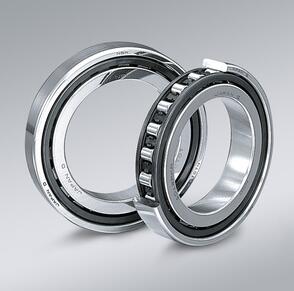INA bearings belong to fine parts, so we must be quite cautious when using them. That is to say, high performance thrust ball bearings are used. If they are not used properly, they can not achieve the expected performance effect, and they are easy to damage the bearings.Even if the invisible smile dust enters the bearing, it will increase the wear, vibration and noise of the bearing.Strong stamping is not allowed, direct hammering of the bearing is not allowed, and pressure is not allowed to be transmitted through the rolling body.Hope to open the INA bearing packaging again in the device.When the ordinary grease is smooth, the bearing is not cleaned, but directly filled with smooth grease.When the oil is smooth, the general need not be cleaned, but the instrument or high-speed bearing should be cleaned with clean oil to remove the rust inhibitor coated on the bearing.Bearing with antirust agent removed is easy to rust, so it can not be placed at will.

Under some special operating conditions, thrust ball bearings can achieve better life of traditional calculation, especially in light load conditions.These special operating conditions are when the rolling surface is effectively separated and limited by a smooth oil film which may cause surface damage.In fact, under ideal conditions, the so-called eternal bearing life is possible.The life of INA bearing is defined by revolution: the bearing within this life should suffer initial fatigue damage (peeling or defect) on any bearing ring or rolling body.But no matter in laboratory experiments or in practical application, it can be clearly seen that the practical life of the same thrust ball bearings with the same appearance under the same working conditions is very different.In addition, there are several different definitions of bearing "life", one of which is the so-called "working life", which means that the practical life of a bearing can be reached before the damage is caused by wear and tear. The damage is usually not caused by fatigue, but by wear, corrosion, seal damage and other causes.
The life of INA bearings is defined as the number of revolutions (or the number of hours working at a certain speed), and the bearing within this life should suffer initial fatigue damage (peeling or defect) on any bearing ring or rolling body.But no matter in laboratory experiments or in practical application, it can be clearly seen that the practical life of the same thrust ball bearings with the same appearance under the same working conditions is very different.In addition, there are several different definitions of bearing "life", one of which is the so-called "working life", which means that the practical life of a bearing can be reached before the damage is caused by wear and tear. The damage is usually not caused by fatigue, but by wear, corrosion, seal damage and other causes.





